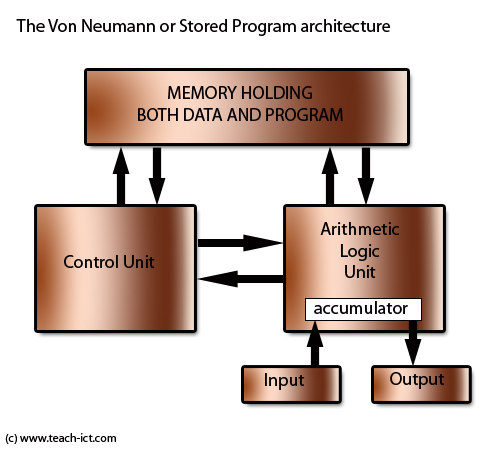 A LEVEL COMPUTING
A LEVEL COMPUTING Von Neumann
Von Neumann
 Theory
Theory
(This is the older material - click here - for current specification content)
2. The Von Neumann machine
Many years ago, in fact 1945, just after the World War, two mathematician-scientists independently proposed how to build a more flexible computer.
One was the British mathematician Alan Turing and the other was the equally talented American scientist John Von Neumann. Alan Turing had been involved with breaking the Enigma code in Bletchley Park using the 'Colossus' computer and John Von Neumann had been working on the Manhattan Project to build the first atomic bomb which needed a vast amount of manual calculations.
Up to that time, the war-time computers where 'programmed' more or less by rebuilding the entire machine to carry out a different task. For example, the early computer called ENIAC took three weeks to re-wire in order to do a different calculation. There had to be a better way.
The new idea was that not only should the data be stored in memory, but that the program processing that data should also be stored in the same memory.
This novel idea meant that a computer built with this architecture would be much easier to re-program. Effectively the program itself is treated as data.
This 'stored-program' architecture is now commonly known as the 'Von Neumann' architecture.

Challenge see if you can find out one extra fact on this topic that we haven't already told you
Click on this link: Von Neumann architecture
P.S. Turing also got his own bit of fame by framing the 'Universal Turing Machine' and even more famously by devising the 'Turing Test' which is still used today to decide if a computer has fooled a person into thinking they are conversing with another person rather than a computer.
Copyright © www.teach-ict.com

